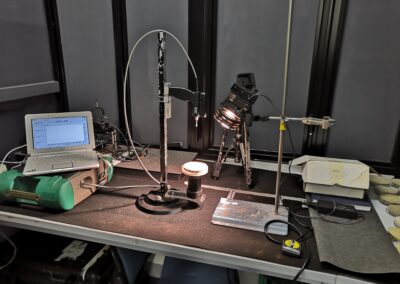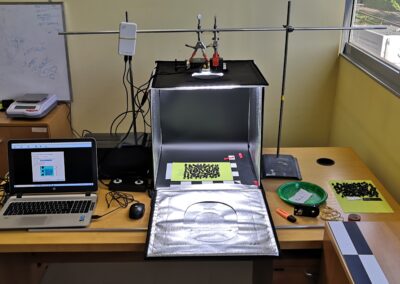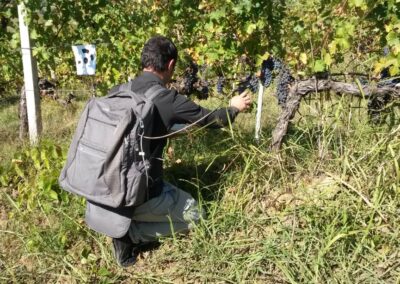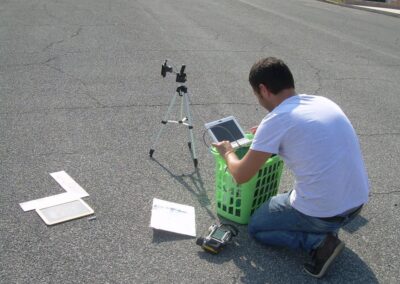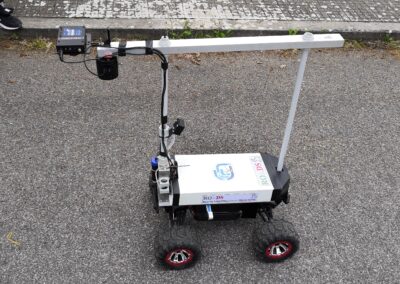The Laboratory activities focus on the analysis of interaction phenomena between electromagnetic radiation (natural context or controlled lighting conditions) and objects. Through this type of investigation it is possible to define qualitative and quantitative relationships between radiometric data and chemical/physical characteristics of the investigated objects or surfaces, both of natural and anthropic origin.
The ways in which surfaces reflect, transmit or absorb electromagnetic radiation is in fact a function of the chemical-physical characteristics of the materials that compose them. By analyzing the amount of radiation reflected at different wavelengths it is therefore possible, for example, to distinguish the different materials that make up the earth's surface (soil, vegetation, rocky outcrops, bodies of water...) but also to define the state of degradation of the materials or the vegetative vigor.
The determination of the chemical-physical characteristics of the analyzed samples takes place through the use of high-resolution radiometers, both of the image and punctual type. Imaging radiometers are able to acquire images in a range of the electromagnetic spectrum which depends on the instrumental resolution (multispectral or hyperspectral). Spectroradiometers, on the other hand, provide punctual data (spectra) with high radiometric and spectral resolution in the VIS-NIR and SWIR range. Finally, the use of thermal cameras extends the analysis range to the TIR range of the electromagnetic spectrum, allowing specific analyzes by exploiting the emissive properties of the materials.
Among the main topics covered in the laboratory:
(1) characterization and identification of plastic and bioplastic polymers;
(2) estimation of the state of degradation of the road pavement through the application of radiometric sensors in situ or on a drone (UAS and terrestrial ROVER) for the study of bituminous conglomerates;
(3) precision agriculture through the estimation of the chemical-physical properties of plant targets;
(4) Retrieval of the main chemical-physical properties of soil targets through the use of field and laboratory radiometric sensors;
(5) characterization of man-made materials and their degradation both in urban and archaeological contexts.
The laboratory is equipped with:
Mobile medium:
- Peugeot Boxer used as a mobile laboratory for the transport of instrumentation and data processing. The vehicle is equipped with a worktop, refrigerator, freezer for transporting samples, rear technical compartment, power supply with: Palazzoli connection, continuity group, inverter.
Instrumentation:
- Fieldspec 4 ASD
- TETRACAM LITE multispectral camera
- FLIR thermal imaging camera
Referent: Alessandro Mei

